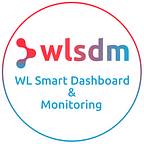WLSDM Review by Radu Dobrinescu
The WebLogic application server can host business critical J2EE applications or can serve as a platform for just as important middleware systems such as Identity Management, Business Intelligence, Service Oriented Architecture and others. Either way, it is very important that WebLogic administrators have quick access to the most significant metrics that show how the system is behaving. And although there are very useful and versatile built-in monitoring tools included in the Fusion Middleware stack, such as the WebLogic administration console or the Enterprise Manager applications, these can still be further improved with features that can prove to be very helpful, especially for real-time monitoring. One such extension to the already existing tools is the WebLogic Smart Dashboard and Monitoring application.
The tool integrates natively with the administration console and the links to its monitoring features conveniently show up as a portlet in the administration console portal.
The product itself is very easy to install and basically consists of copying the application war file in the console-ext directory of the domain followed by a restart the Admin Server. The WLSDM portlet that allows access to the main WLSDM pages is also reachable by a direct URL….
The initial access to the WLSDM pages will redirect the user to a web based configuration wizard that reads the domain resources and allows the administrator to define settings for email notifications and thresholds for the servers, deployments and data sources, as well as their essential metrics collected in the WebLogic domain. This may not be a completely new functionality since the same is also covered in the default WebLogic administration console by the Monitoring Dashboard feature. However, the WLSDM configuration wizard does a very good job at complementing the out-of-the-box Monitoring Dashboard, as it makes it very easy for an admin to define thresholds just for the relevant metrics and decide whether or not to be alerted on events. It can be a little overwhelming and time consuming to define a set of usable views with the build-in tools, but it takes just a few minutes with WLSDM, thanks to a responsive and intuitive interface where the most relevant metrics are already selected, saving the administrator from having to look for each of them in each server’s Mbean tree.
Once configured, the Dashboards show a continuous monitoring of the Servers, Deployments and Data Sources in the domain. The status of each target is displayed in the “Health” Dashboard, while email notifications for each resource (deployment or data source) can easily be enabled/disabled from the same screen.
Real-time monitoring for the relevant metrics of Servers, Deployments or Data Sources is also included:
The Deployments graphs can get quite crowded, especially in the case of WebLogic domains that are extended with the JRF (ADF, SOA or other FMW products). Since I tested the tool on a domain configured with ADF 12c, I personally would have liked to have an option to differentiate between libraries and applications when defining the Deployment thresholds. However, both libraries and applications can still be excluded from monitoring, one by one.
All Dashboards are configurable in terms of visual settings, as well as metric collection and page refresh frequencies.
Another strong feature of WLSDM is the ability to store historical data for each metric monitored, thanks to an Apache Derby database that ships with the application. This is an important option that is not offered by default with the typical Fusion Middleware install. It requires the installation of some dedicated monitoring products, such as the Enterprise Manager Grid/Cloud Control, which usually require a good amount of resources.
Based on the stored data, reports can be defined and exported in various formats or even sent directly to the printer.
WLSDM also includes some troubleshooting tools such as Log Inspector and Dumps, as well as performance monitoring, for instance the Response Time indicators defined for specific URIs.
In terms of performance impact, there seemed to be no significant overhead on the servers during my testing, as metrics are being collected by the DMS anyway.
Conclusion:
The WLSDM tool is a lightweight web-based application that can be very useful for real time monitoring of the various resources running in the WebLogic domain. It can also be easily configured to send Email alerts on various events in the WebLogic servers’ lifecycle.
I personally recommend to use this tool, or at least give it a try because of its main benefits:
· Easy installation and configuration of thresholds and alerts for the essential metrics
· File system historical data store, not available otherwise without products like EM Grid/Cloud Control
· Integrated with the WebLogic administration console, modern and responsive interface
I believe WLSDM is in the early stages of development, so there will definitely be more improvements on the way. What I would personally like to see:
· Although the threshold can be defined based on the current value of the metric, it would be nice to have default values rather than having to define each threshold at configuration time
· Differentiate between libraries and applications when defining deployment settings
· Would be nice to add a testing option for the modifications of the email settings, this is currently available only in the initial configuration wizard
· Minor bugs in the interface, such as the notifications cannot be enabled/disabled for deployments in the second page, if the deployments spread over multiple pages of the dashboard
More about the product and download at www.wlsdm.com
Author: Radu Dobrinescu, Oracle Fusion Middleware Consultant
https://www.linkedin.com/in/radudobrinescu
Installation is really easy and you can setup a complete monitoring infrastructure in less than 5 minutes. If you want to try then go to download page below URL:
